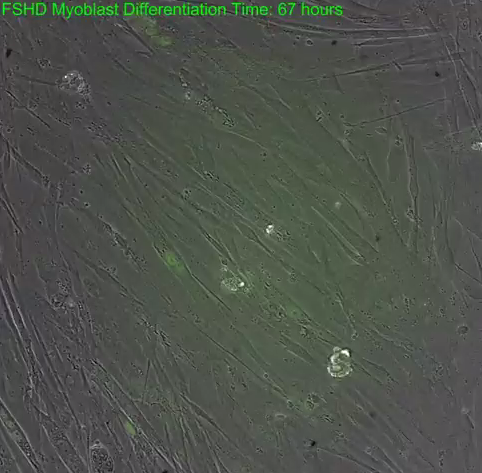Posted by Gregory J Block MSc PhD on Sep 2, 2015

A new study from the University of Washington has followed the fate of cells that express the FSHD-causing gene, DUX4. The new study, supported by Friends of FSH Research, follows DUX4 in live cells. Wait a second...how do you follow DUX4 in live cells if it's almost impossible to detect? By developing and validating a highly sensitive reporter of DUX4 activity - that's how.
A reporter is a common genetic tool that shines or does something awesome when a gene of interest (in this case, DUX4) is present. The tool allowed Amanda Rickard and Lisa Petek in Dan Miller's lab to follow the fate of DUX4-expressing cells - and guess what - they don't do so well (the cells, not Amanda, Lisa, and Dan).
Reporters also enable researchers to do nifty things, like separate the DUX4-expressing cells and ask what their fate is, and ask how they are different from their neighboring cells that do not express DUX4.
There are some very tangible pieces of data in this work:
- The DUX4 reporter system is a highly sensitive tool for measuring DUX4 activity in live cells. It appears to have enough sensitivity to separate DUX4 expressing cells from non-DUX4 expressing cells by the most sensitive measures that are available. There are major implications for use in screening or further experiments to trace/isolate DUX4 in cultured cells or animal models.
- When a cell is activated to produce DUX4, that cell (or tube) will inevitably die. This validates that DUX4 is toxic to cells in culture.
- The amount of "bursts" of DUX4 can vary wildly between cell lines. You always hear DUX4 is expressed in 1/1000 cells - this statement may not be precise.
- By separating out the DUX4-expressing cells from ones that do not express DUX4, you can detect profound changes in the RNA profile of those cells. The deep sequencing data highlights that a DUX4-expressing cell is not OK. There are genome-wide transcriptional changes that are far beyond just a new set of genes turning on.
Here is the paper, and watch the video - it's worth 1000 words per frame.





Connect with us on social media